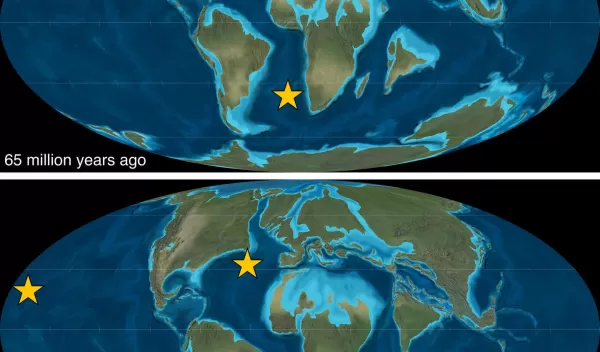
Tectonic collision 50 million years ago led to widespread ocean changes
When the landmass that today is the Indian subcontinent slammed into Asia some 50 million years ago, the collision changed the configuration of the continents and altered global climate.
Now a team of Princeton University scientists has identified one more effect: oxygen in the world's oceans increased, changing the conditions for life. The results were published in the journal Science. The research was funded by NSF's Division of Ocean Sciences.
Geoscientists used microscopic fossil shells to derive a record of ocean nitrogen for a period of 40 million years -- from 70 million years ago, shortly before the extinction of the dinosaurs, through 30 million years ago. The researchers collected fossil-containing sediment from the bottom of the Atlantic and Pacific Oceans and analyzed the nitrogen bound in the microscopic shells. Nitrogen levels are sensitive to the amount of oxygen dissolved in the sea.
The researchers expected that ocean oxygen would rise as Earth's climate cooled because oxygen is more soluble in colder water. To their surprise, data on nitrogen in those ancient times in turn suggested that oxygen levels rose several million years before widespread cooling occurred.
The likely culprit? Plate tectonics. The collision of India with Asia closed off an ancient sea called the Tethys, where low-oxygen waters were formed, changing the oxygen and nitrogen balance of the oceans.
